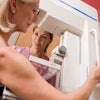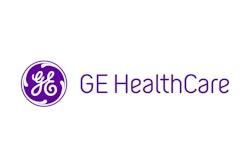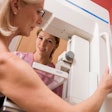
AuntMinnie.com presents the second installment of a three-part series titled the Deficit Reduction Act Survival Kit. Each part offers concrete suggestions for thriving, not just surviving, in today's DRA environment. This part will address improving your site's operations by streamlining workflow process and increasing revenue collection. Click here for Deficit Reduction Act Survival Kit, Part 1 -- Leading your imaging center.
Have you recently conducted an operational assessment of your imaging center? Do you know how your operations compare with national benchmarks? Do you know what to measure? If you answered no to any of these questions, you probably are not positioned to attain operational excellence.
Operational excellence should be the goal of all centers in order to survive the ramifications of the DRA. Why? Because operational excellence equals growth. For an organization to thrive it must be able to optimize operating conditions. The key is to focus on the big picture while keeping your eye on the details. Targeting small, incremental changes will add up to a large payoff. Think of improving the bottom line of your imaging center by implementing lots of 1%, 2%, and 3% solutions.
Operational improvement requires focusing on the granular level of workflow processes. For example, an imaging center was scanning less than one MRI patient per hour. An operational audit and analysis revealed that MRI empty room time was well above the national benchmark. A team identified root causes and implemented a plan to fix the problem. Within two weeks, the center was able to increase MRI capacity to two patients per hour. Revenue was projected to increase by about $1 million (assuming $500 average reimbursement, scanning eight hours a day, five days a week) the first year after implementing the changes.
The components of operational excellence fall into three categories:
- Access and service
- Capacity and throughput
- Revenue cycle
Access and service
Getting volumes of patients to move seamlessly through the process of obtaining a scan requires a coordinated effort with potentially devastating effects at every turn. One slip up at any point in the patient’s journey through your imaging center can spell disaster. Do you know how long your patients wait on hold to schedule an appointment? Do you know what percentage of your patients wait more than 15 minutes in your reception area, formerly known as the waiting room (patients don't wait, they are received)? Do you have the patients' primary language identified and written on the order at the time the appointment is scheduled?
Do you monitor your appointment backlog by number of days? Do you break down backlog by modality? Again, if you are unsure or answered no, chances are you have only anecdotal information about backlog. Using the average number of days a patient has to wait for an appointment is not an accurate backlog picture. It's the variance in the number of days that the patient experiences, not the average. For example, if the average backlog is five days to receive an MR, and the variance (a measure of how many days tend to deviate from the average) is five, then a patient might wait 10 days for an appointment. The goal is to reduce backlog variance.
Another access issue involves monitoring "no shows" by day of week and time. One suburban imaging center monitored this metric over a one-month period and found 18% of all no-shows occurred on Thursdays at 10 a.m.
Administrators divided no-shows by modality, referring physician, insurance, sex and diagnosis. No discernable pattern seemed to emerge, which is sometimes the case.
In this case, the only information they had was an unacceptably high no-show percentage rate. Within two weeks, a no-show reduction plan was created and implemented. After a one-month period, the no-show rate for the entire imaging center decreased by 5%. The pesky 10 a.m. Thursday appointment’s no-show rate decreased to 9% down from 18%.
Think of improving the bottom line of your imaging center by implementing lots of 1%, 2%, and 3% solutions.
Each component can be dissected, measured and improved upon. However, some centers get bogged down in analysis paralysis. Others struggle with cultural malaise. Both are symptoms of organizational inertia and a tendency to maintain the status quo. This goes back to the idea that change can only happen if leadership and management systems are in place and working effectively.
Fast report turnaround times are four words some people do not wish to utter. In fact, report turnaround time is such a sensitive topic that its importance has grown to epic proportions. When a sample of physicians who refer patients to radiologists were asked what the most important factor was in deciding where to send a patient for a diagnostic imaging exam, the number one response was "getting patients scheduled in a timely way." Report turnaround was third. Number two was that referring physicians wanted some familiarity with the radiologist.
Yes, getting reports turned around in a timely manner (less than 24 hours) is central to attaining operational excellence.
"Walking chaos"
Once patients are sent back for scans, efficient imaging machine cycle time is crucial to attaining operational excellence. Take a look at process flow. Have you mapped it out? Do you know how long pre- and post-procedure time is for MR, CT, mammography? At one freestanding imaging center in a large city, an employee shadowed the lead MR technologist through the day. This employee counted the steps from the time it took to walk to the reception area through the imaging process and back to the reception area. This was a typical ambulatory MR patient requiring contrast. It took the lead technologist 675 steps to service that one patient. Multiply that by the number of working technologists and you wind up with walking chaos.
Here is where productivity benchmarking is used. Getting patients scanned quickly only addresses part of the problem. Let’s use CT as an example of how to increase capacity and streamline operations throughout your center. CT is the workhorse of most outpatient imaging centers. All CT pre-exam work should be done prior to the patient entering the room. Pre-exam work includes everything from changing room time, IV set-up time, and patient education time.
Remember, the goal is to implement lots of 2% and 3% solutions. Any reduction in pre- and post-scanning time creates capacity.
Revenue cycle
Now, more than ever, imaging centers are paying close attention to cash flow and receivables management. No matter how low your uncollectible/bad rate, there are always places to improve (remember 1% and 2% solutions?).
Implement a comprehensive financial strategy that focuses on managing co-pays, deductibles, self-payments, and reimbursements; increasing collections; avoiding and managing all denials; and capturing all charges efficiently and effectively.
Pre-registering patients well before their appointment, confirming insurance coverage, obtaining pre-authorization, and estimating the patient's portion of the bill can minimize bad debt. Some centers call patients prior to their visit to discuss the amount and process for co-payment. The center will discuss setting up a payment plan for the non-reimbursable portion of the bill, if necessary.
Others post payment policies in the reception area and have someone available to discuss options. Lost charges are the bane of any imaging center. It's best to assign one staff person to be responsible for the entire charge-capture process. Since charge codes change so often, create a method to monitor and update codes in your billing system.
By Evan LeepsonAuntMinnie.com contributing writer
August 1, 2007
A business and strategy consultant to the diagnostic imaging community, Evan Leepson is a senior consultant for GE Healthcare's Performance Solutions. His speaking engagements have included presentations to the California Radiological Society Annual Meeting, Economics of Diagnostic Imaging: National Symposium, Radiology Business Management Society Annual Meeting, and the American Healthcare Radiology Administrators Annual Meeting.
Related Reading
Deficit Reduction Act Survival Kit, Part 1 -- Leading your imaging center, July 23, 2007
DRA takes bite out of GE's Q2 numbers, July 16, 2007
It may get worse before it gets better for diagnostic radiology practices, July 9, 2007
The DRA at six months: How outpatient imaging centers are coping, June 26, 2007
RVUs key to tracking radiologist and physician productivity, June 12, 2007
Copyright © 2007 AuntMinnie.com



















